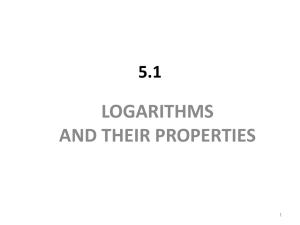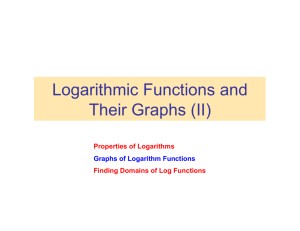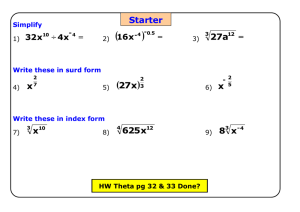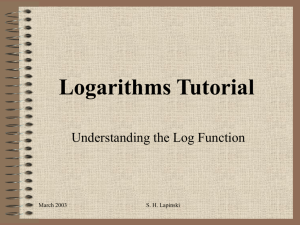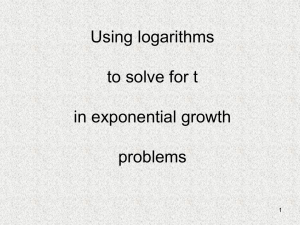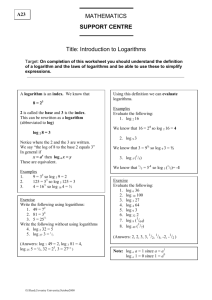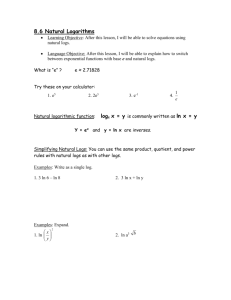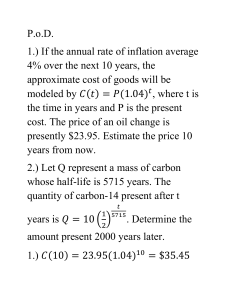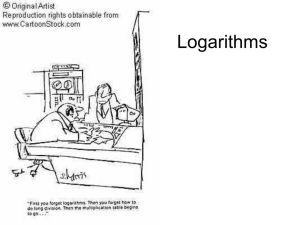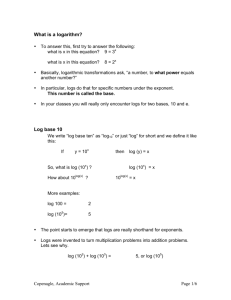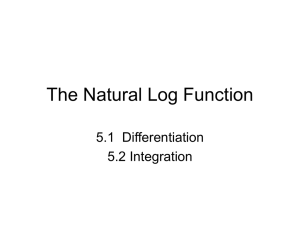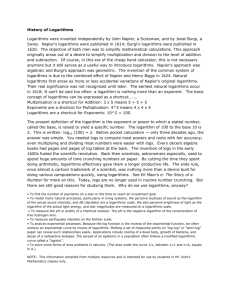7 - 5 Properties of Logarithms
advertisement
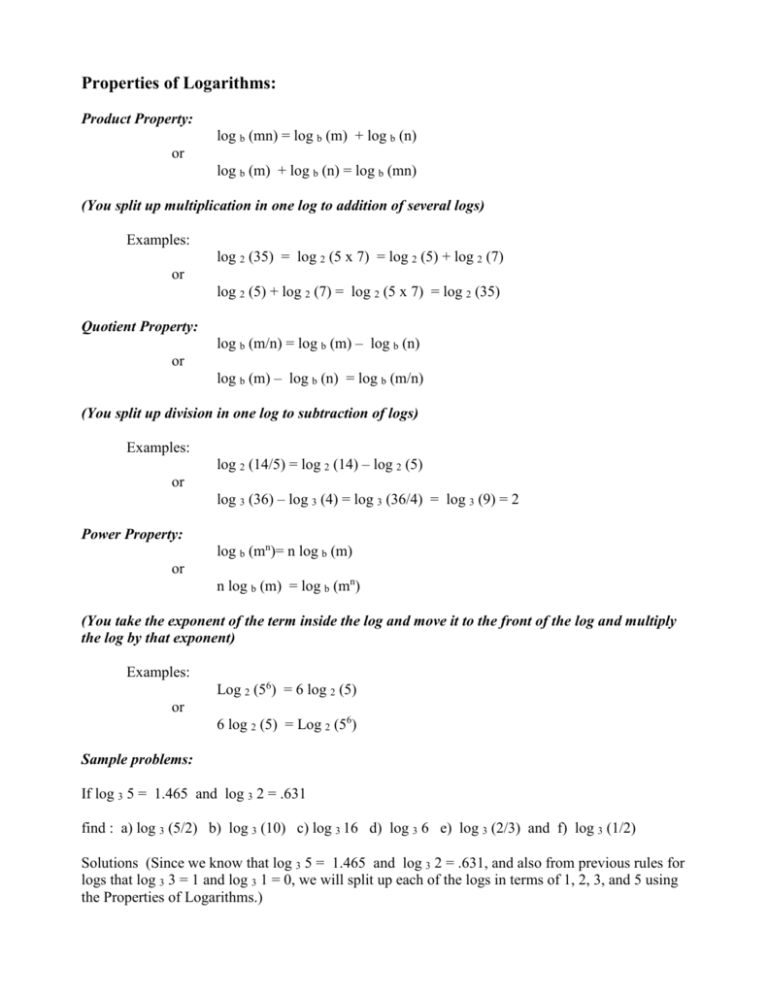
Properties of Logarithms: Product Property: log b (mn) = log b (m) + log b (n) or log b (m) + log b (n) = log b (mn) (You split up multiplication in one log to addition of several logs) Examples: log 2 (35) = log 2 (5 x 7) = log 2 (5) + log 2 (7) or log 2 (5) + log 2 (7) = log 2 (5 x 7) = log 2 (35) Quotient Property: log b (m/n) = log b (m) – log b (n) or log b (m) – log b (n) = log b (m/n) (You split up division in one log to subtraction of logs) Examples: log 2 (14/5) = log 2 (14) – log 2 (5) or log 3 (36) – log 3 (4) = log 3 (36/4) = log 3 (9) = 2 Power Property: or log b (mn)= n log b (m) n log b (m) = log b (mn) (You take the exponent of the term inside the log and move it to the front of the log and multiply the log by that exponent) Examples: or Log 2 (56) = 6 log 2 (5) 6 log 2 (5) = Log 2 (56) Sample problems: If log 3 5 = 1.465 and log 3 2 = .631 find : a) log 3 (5/2) b) log 3 (10) c) log 3 16 d) log 3 6 e) log 3 (2/3) and f) log 3 (1/2) Solutions (Since we know that log 3 5 = 1.465 and log 3 2 = .631, and also from previous rules for logs that log 3 3 = 1 and log 3 1 = 0, we will split up each of the logs in terms of 1, 2, 3, and 5 using the Properties of Logarithms.) a) (by Division Property) log 3 (5/2) = log 3 5 – log 3 2 = 1.465 - .631 = .834 b) (by Multiplication property) log 3 (10) = log 3 (5 x 2) = log 3 5 + log 3 2 = 1.465 + .631 = 2.096 c) (by Power Property) log 3 16 = log 3 24 = 4 log 3 2 = 4 ( .631) = 2.524 d) (by Multiplication Property) log 3 6 = log 3 (2 x 3) = log 3 2 + log 3 3 = .631 + 1 = 1.631 e) (by Division Property) log 3 (2/3) = log 3 2 – log 3 3 = .631 – 1 = – .369 f) (by Division Property) log 3 (1/2) = log 3 (1) – log 3 (2) = 0 – .631 = – .631 Expanding Logarithms using the properties: To expand a logarithm, you want to write it in terms of sums and differences of logarithms with no exponent inside a log, if possible. (Use the Product Property, Quotient Property and Power Property to do this.) Example: Expand log 2 5x2y3 = log 2 5 + log 2 x2 + log 2 y3 – (log 2 3 + log 2 z) = 3z = log 2 5 + 2 log 2 x + 3 log 2 y – (log 2 3 + log 2 z) Condensing Logartihms using properties: To condense a sum or difference of logarithms, you want to get all the logs into a single log with a coefficient of 1 in front of that log, if possible. (Use the Product Property, Quotient Property and Power Property to do this.) Example: Condense log 4 5 + 2 log 4 x – 4 log 4 y + 2 log 4 z = log 4 5 + log 4 x2 – log 4 y4 + log 4 z2 = = log 4 5 x2 z2 y4 Changing Bases of Logarithms: Any logarithm can be changed by its base by doing a division of logs: (Changing from base b to base m) log b a = log m a log m b (You divide the log of the term inside of the original log by the log of the base in the log (using a new base in the division). Examples: Change to base 5: log 3 4 = log 5 4 log 5 3 Change to base e: log 2 7 = log e 7 = ln 7 log e 2 ln 2 Why this Change of Bases helps: Find log 3 18. (Using Change of Bases, you can write:) log 3 18 = log 18 = 1.2553 = 2.631 log 3 .4771
